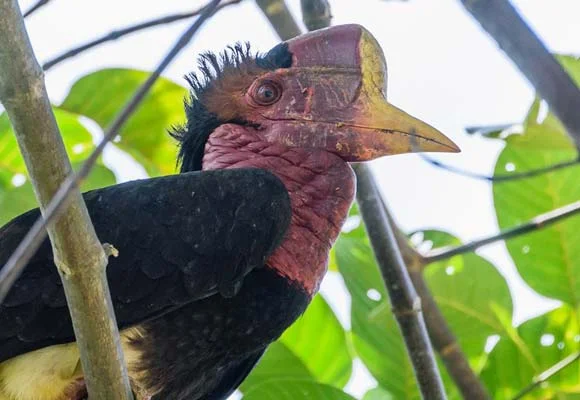Flappy: close up taken when the bird was fitted with a satellite tag
On 3rd June 2017, Flappy - the Oriental Bird Club sponsored Common Cuckoo - completed the round trip back from Mozambique, where she wintered, to her summer home in Olon Balj Basin National Park in northern Mongolia. Remarkably, the latest satellite signals reveal she is within 2-3 km of where she spent summer 2016. Flappy is one of several cuckoos satellite tagged as part of the Beijing Cuckoo Project in May 2016 in Beijing, China.
Only two of the original five tagged cuckoos - Flappy and another bird, Meng - still have active transmissions - the tags either having failed or the birds carrying them perished. Both Flappy and Meng wintered in southern Africa having moved from their summering areas in Mongolia and China respectively. Flappy is a female of the nominate subspecies, while Meng is a male of the slightly smaller race bakeri.
Full details of the remarkable travels of these birds - which took in East Asia, parts of South-east Asia and South Asia, then across the Arabian Sea and along the coast of the Arabian peninsular and into the Horn of Africa, down through East Africa to southern Africa - can be found on the The Beijing Cuckoo Project website.
The Beijing Cuckoo Project aims to engage Chinese audiences about the wonders of bird migration with a view to promoting conservation and helping to strengthen the links between Chinese and international bird conservation organisations.
The main scientific goal was to discover the unknown migration route and winter quarters for Common Cuckoos breeding in East Asia. In 2017, there are plans to tag further birds to learn more about the remarkable migrations.
The Beijing Cuckoo Project is a collaboration between the Beijing Wildlife Rescue and Rehabilitation Centre (BWRRC), China Birdwatching Society (CBS), the British Trust for Ornithology (BTO) and Birding Beijing.
BWRRC logo
(小)中国观鸟会logo
master_logo_portrait
Alongside OBC, other supporters of the project are the Zoological Society of London and the British Birds Charitable Foundation and BirdLife International.
ZSL_LOGO_STACKED_CMYK
high_res_obc_logo
logo-british-birds
logo-birdlife-colour-2000px



























